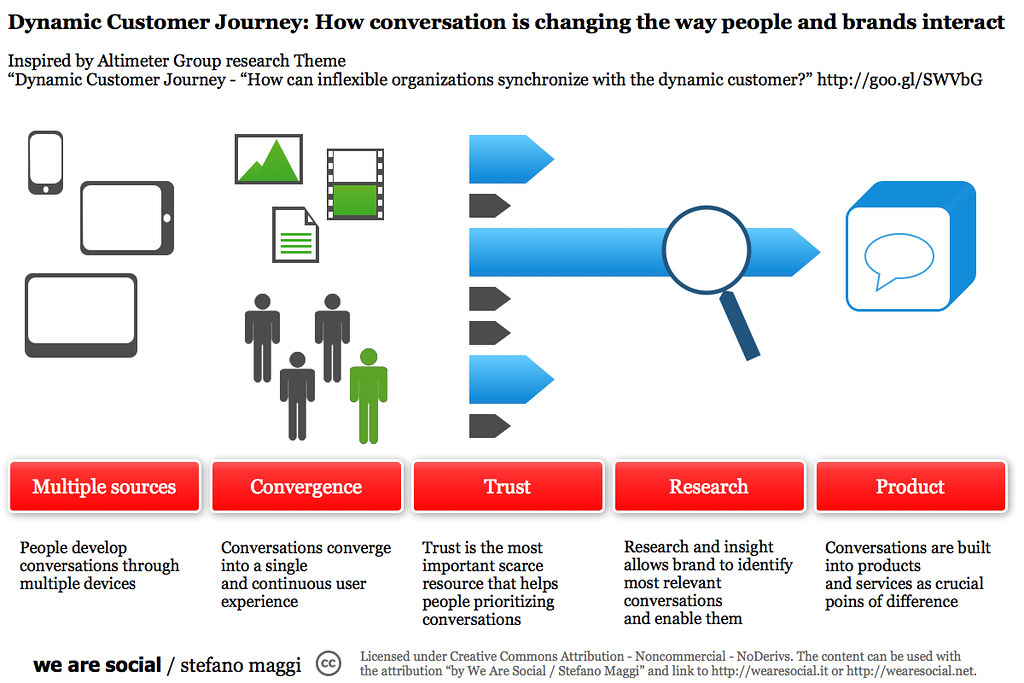
Imagine walking into a store where the staff already knows what you need, or visiting a website that answers your questions before you even ask. Sounds pretty ideal, right? Thanks to artificial intelligence, this is becoming a reality for businesses everywhere. A recent study shows that companies using AI to boost customer experience can see up to a 25% jump in customer satisfaction! In this article, we'll look at how AI can change the way businesses interact with customers. From predictive analytics to personalized recommendations, AI offers plenty of ways to make customer experiences memorable. We'll explore practical strategies to integrate AI into your customer experience plan. Whether you're just starting out or have been in business for years, this guide will help you tap into AI's potential for delivering great customer service.
Step-by-Step Guide to Enhancing Customer Experience with AI
Map the Customer Journey for Improved Experience
Identify and Document Each Phase of the Customer Journey
To truly enhance customer experience with AI, it's essential to map out the entire customer journey. This begins with identifying and documenting each phase, from initial brand awareness to post-purchase interactions. Typically, these stages include:
- Awareness
- Consideration
- Purchase
- Post-Purchase
These stages represent key opportunities for customers to engage with your brand.
Create a comprehensive map that outlines the customer's path from first contact to final purchase and beyond. Utilize customer journey mapping software or simple flowcharts to visualize this journey, ensuring to include touchpoints such as:
- Website visits
- Social media interactions
- Emails
- In-store experiences
By documenting each phase, you can identify where AI can enhance the experience.

Identify Pain Points and Friction in the Customer Journey
Once the journey is mapped, focus on identifying specific pain points and friction spots. These are the areas where customers encounter obstacles or delays, potentially leading to frustration or abandonment.
Utilize tools like surveys, interviews, and customer feedback to uncover these pain points. Look for recurring issues such as:
- A cumbersome checkout process
- Slow customer service
- Lack of personalized recommendations
Clearly marking these pain points on your journey map allows you to strategically implement AI solutions to address them, thereby boosting customer satisfaction and loyalty.
Define Clear Objectives for AI Integration in Customer Experience
Set Specific AI Goals for Each Journey Phase
With a clear understanding of the customer journey and its pain points, it's time to establish specific AI goals for each phase. These objectives should align with your overall business strategy and customer experience goals.
For example:
- Awareness Stage: Use AI-driven content suggestions to enhance brand visibility.
- Consideration Phase: Implement AI for personalized product recommendations to aid decision-making.
- Purchase Stage: Simplify checkout with AI-driven predictive shipping options.
- Post-Purchase: Leverage AI for customer support via chatbots and personalized emails.
Ensure each goal is SMART: Specific, Measurable, Achievable, Relevant, and Time-bound, keeping AI initiatives focused and trackable.
Align AI Objectives with Business Outcomes
Aligning AI objectives with measurable business outcomes demonstrates AI's value. Define key performance indicators (KPIs) such as:
- Increased conversion rates
- Reduced abandoned carts
- Improved customer satisfaction scores
- Faster response times
For instance, if using AI chatbots for support, a suitable KPI might be a reduction in average response time or an increase in issues resolved without human intervention. Regularly monitoring these metrics helps assess AI's impact and informs future improvements.

Select and Implement AI Tools for Customer Experience
Choose AI Solutions Aligned with Customer Experience Goals
Selecting the right AI tools is crucial. Begin by researching solutions that align with the specific goals for each customer journey phase. Consider factors such as:
- Ease of integration
- Scalability
- Cost
- Customization options
For example, to enhance product recommendations, seek platforms with robust recommendation engines. For customer support, explore AI chatbots with natural language processing capabilities.
Experiment with various vendors and solutions through demos, trials, and reviews to ensure the best fit for your business needs.
Deploy AI Tools Across Customer Touchpoints
After selecting the appropriate AI tools, deploy them across the relevant touchpoints identified in your journey map. Ensure a seamless deployment that enhances, rather than disrupts, the current customer experience.
For example:
- Integrate AI chatbots on your website and mobile app for instant support.
- Utilize AI analytics to monitor social media interactions.
- Implement AI recommendation engines on your e-commerce site for tailored product suggestions.
Collaborate with IT and customer service teams during deployment to address technical issues and ensure everything functions as expected. Regular testing and adjustments are vital to maximize AI benefits.